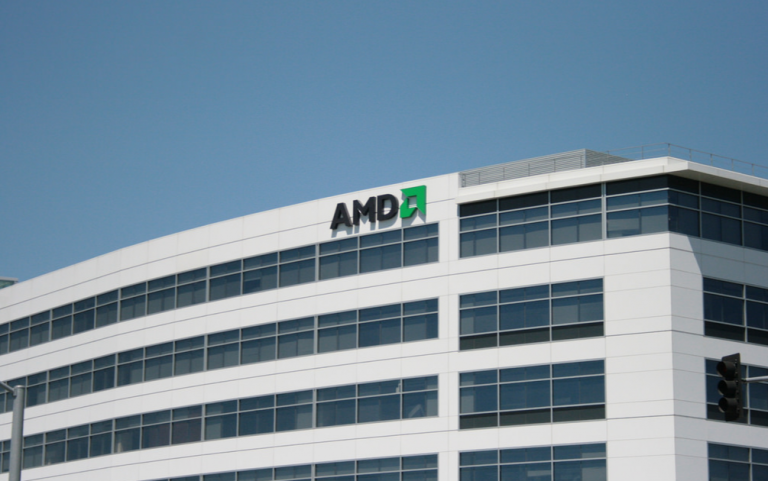 INFRA
INFRA
 INFRA
INFRA
 INFRA
INFRA
Updated:
Computer chipmaker Advanced Micro Devices Inc. has just come through a rough quarter that saw its revenue fall 13% from a year ago, despite beating expectations.
The company, which competes against larger rivals such as Intel Corp. and Nvidia Corp., today reported second quarter earnings before certain costs such as stock compensation of 8 cents per share on revenue of $1.53 billion, almost spot-on what Wall Street had forecast.
Breaking down its second-quarter numbers by unit, AMD said its computing and graphics group pulled in revenue of $940 million, down 13% from a year ago. Officials said the unit saw strong demand for personal computer and data center chips, but graphics chip sales were hit by “lower channel sales.” As for AMD’s Enterprise, Embedded and Semi-Custom unit, revenue fell 12% from a year ago, to $591 million.
AMD is at least expecting a stronger third quarter. In its guidance, the company said it expects revenue of around $1.8 billion, give or take $50 million, for the next three-month period, which would be up 13% from a year ago. But those numbers weren’t enough to satisfy Wall Street, which had forecast third-quarter sales of $1.95 billion.
The lower-than-expected guidance certainly spooked the company’s investors. AMD’s stock was down almost 4% in after-hours trading. Update: Shares plunged more than 10% Wednesday, though that higher drop may have been partly the result of the interest-rate cut that whacked the overall markets.
“AMD met expectations for the quarter, but took its forecast down based on softness in the game console market,” said Patrick Moorhead, an analyst with Moor Insights & Strategy. “I believe this softness is driven by consumers getting excited for the next generation consoles from Microsoft (Scarlett) and Sony (PS5) and delaying purchases.”
Moorhead also pointed to the lack of blockchain graphics processing unit revenue, which made up over $100 million of AMD’s revenue in the same period a year ago, as another reason for its overall revenue decline.
Analyst Charles King of Pund-IT Inc. said the after-hours selloff was likely a sign that investors were disappointed with AMD’s performance after the generally positive media coverage it has enjoyed over the last few months.
“It’s not unlike a horse that gets talked up before race time, then finishes lower than expected,” King said.
On the other hand, Moorhead said there was good reason to be optimistic about AMD’s prospects for the rest of the year.
For one thing, he noted that AMD is forecasting a 40% revenue increase in the second half of the year versus the first six months, which will likely be driven by strong demand for its new Ryzen and EPYC chips.
“As the new seven-nanometer Ryzen and EPYC just started shipping in very late Q2, those sales are not reflected much in Q2 earnings,” the analyst said. “I expect a sharp spike in Ryzen and EPYC sales in Q3.”
The chipmaker is also likely to benefit from a recent deal it struck with Samsung Electronics Co. Ltd. that will see it re-enter the mobile graphics card business. AMD had exited that business around 10 years ago after selling its related assets to Qualcomm Inc., but in June announced a surprise multiyear deal with Samsung that will see the handset maker use its RDNA graphics architecture in phones and tablets.
AMD’s RDNA architecture was introduced earlier this year, primarily designed for gaming computers, but the company said it can easily be adapted for other platforms. The deal will see Samsung license AMD’s designs to build mobile systems-on-chips, rather than buy chips directly.
“AMD is still in an adjustment phase that has struck the entire industry,’ said Holger Mueller, principal analyst and vice president of Constellation Research Inc. “The good news is it keeps innovating and the number of design wins and partnerships is on the rise. Now it all comes back to execution for AMD, as the next quarter will be the first one where it’ll be able to turn out year-over-year growth. That’s what investors want to see and all eyes will be on AMD to deliver.”
AMD may also get an unexpected boost from Google LLC, which is apparently considering dropping Intel as its main supplier of data center chips for AMD’s Epyc server platform, according to a report from Lynx Equity Research this week.
“The Google rumors are interesting but need to be taken with a grain of salt,” King said. “It wouldn’t be the first time that a company played one supplier off another to wrangle more favorable terms. It’s also entirely possible that cloud players and major server vendors will add AMD options to their portfolios, but how or how enthusiastically cloud and data center customers will react remains to be seen.”
Support our mission to keep content open and free by engaging with theCUBE community. Join theCUBE’s Alumni Trust Network, where technology leaders connect, share intelligence and create opportunities.
Founded by tech visionaries John Furrier and Dave Vellante, SiliconANGLE Media has built a dynamic ecosystem of industry-leading digital media brands that reach 15+ million elite tech professionals. Our new proprietary theCUBE AI Video Cloud is breaking ground in audience interaction, leveraging theCUBEai.com neural network to help technology companies make data-driven decisions and stay at the forefront of industry conversations.